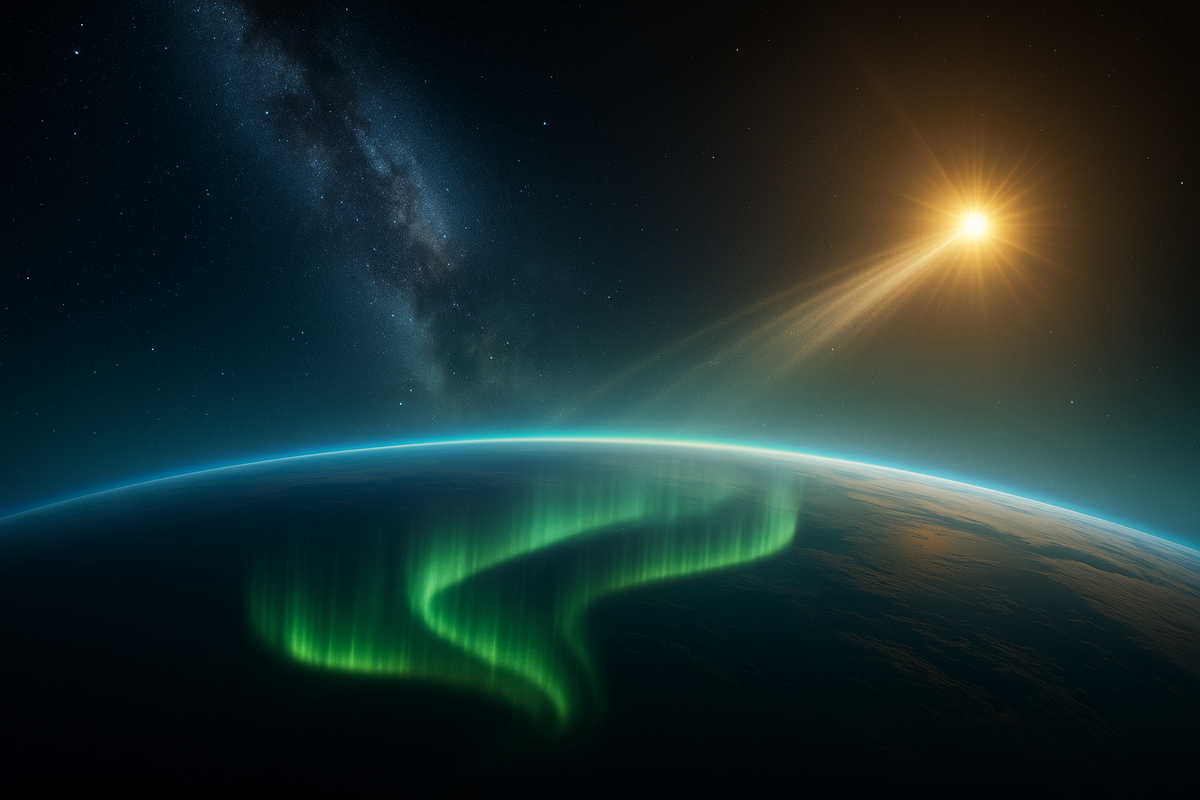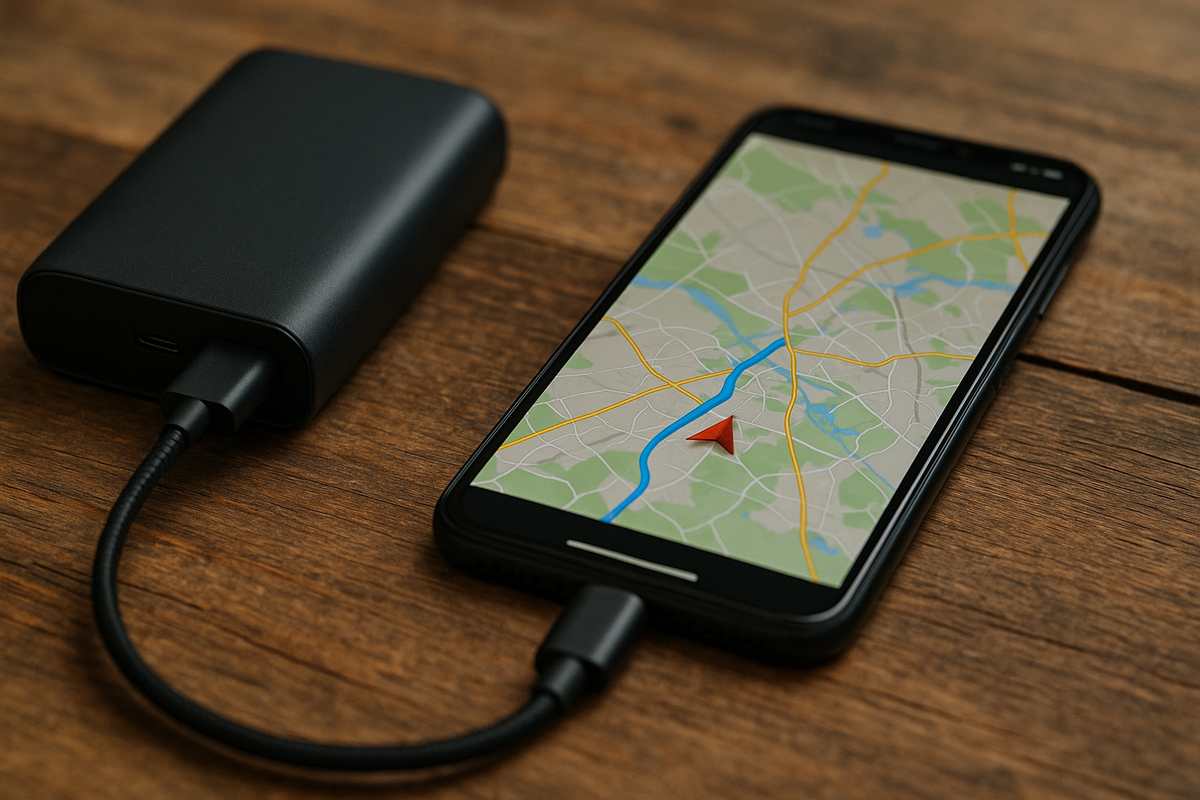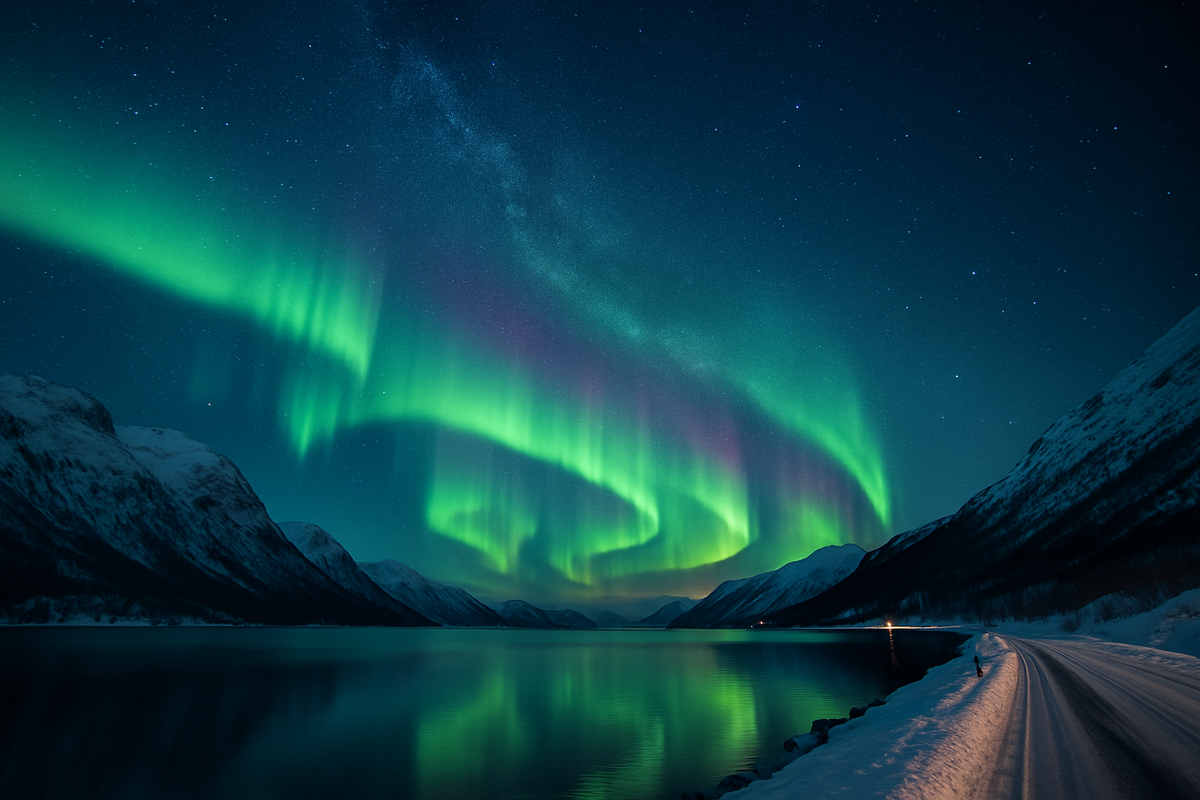🛰️💫 The science behind the aurora: from solar wind to sky colour
The awe-inspiring Northern Lights are a source of wonder for tourists, photographers and scientists alike. But what exactly is happening in the night sky above Norway? I'm so excited to find out why the lights glow in different colours and what natural forces cause them to move! Let's dive into these questions, breaking them down in a way that's both engaging and accurate.

🌞 What is solar wind and how does it create the aurora?
The Northern Lights are basically the result of powerful interactions between the solar wind and the Earth's magnetosphere.
Solar wind is basically a stream of charged particles (electrons and protons) that the Sun shoots into space at crazy speeds (300 to 700 km/s). When these particles reach Earth, the planet's magnetic field stops them.
The Earth's magnetosphere sends these particles towards the poles, where they bump into gas atoms in the upper layers of the atmosphere (at heights of 80 to 300 km). It's these collisions that create the glow — the aurora.
Here's a simple explanation:
Picture these particles as tiny electric sparks, which make the Earth's atmosphere glow like a light bulb.
🎨 Why do northern lights come in different colours?
The colour of the northern lights depends on two main factors:
- The type of gas that the solar wind particles collide with.
- The height at which the particles collide with the Earth's atmosphere.
📌 Green (the most common):
This is down to collisions between particles and oxygen atoms at an altitude of about 100–200 km.
📌 Red (less common):
You tend to see it when particles interact with oxygen atoms at high altitudes (200–300 km). This happens during really strong geomagnetic storms.
📌 Purple and blue colours:
These are caused by collisions with nitrogen at lower altitudes (80–120 km) and require powerful and fast solar wind particles.
Here's a simple explanation:
You know how different gases in the air glow in different colours? The higher the collision energy, the brighter and more unusual the colour.
🌌 Why is the glow sometimes very strong and sometimes weak?
The intensity of the aurora depends on the strength of the geomagnetic storm caused by solar flares:
- Solar flares are powerful bursts of energy and charged particles from the Sun that make things glow almost instantly (within 1–3 days).
- Coronal holes are basically areas on the Sun's surface where the solar wind blows stronger and more steadily, which leads to these prolonged but less intense auroras. The effect normally happens in 2–5 days.
Solar flares are what cause the most powerful and colourful auroras. Scientists track them and give forecasts to observers.
🔋 Can geomagnetic storms disable electronics?
Absolutely! When geomagnetic storms reach a strength of KP≥7, it's a thrilling time! These storms have the power to affect electronics, especially satellites and GPS systems. Such events are rare, but there have been cases where powerful solar flares have temporarily disrupted communications and navigation even on Earth – which is really interesting!
Modern smartphones and cameras are pretty much all you need to worry about, but if you're using GPS, satellite communications or electrical networks, you might experience some interruptions during particularly strong storms.
Here's a great tip:
And if there's a chance of some powerful storms, it's always a good idea to have a backup navigation plan and charged power banks ready.

🌠 Can you see the red glow without a camera or special filters?
Yes, the red aurora is visible to the naked eye, but it is much rarer than the green aurora, which makes it all the more special! All you need is some powerful geomagnetic storms, high KP index values (6 or higher) and a clear sky without light pollution, and you're good to go!
But even though they're bright red, they're usually less intense to the naked eye than in photographs, where the colour is enhanced by long camera exposure times.
💫 The solar cycle and its effect on the frequency of auroras (solar cycle 25/26)
The Sun goes through cycles of activity lasting approximately 11 years. We are currently in the 25th cycle of solar activity, which began in 2020 and will peak around 2025.
What does this mean for tourists?
● In the coming years, the frequency and brightness of auroras will increase.
● During periods of peak activity (2025–2026), the northern lights will be particularly frequent and intense.
Tip:
Plan your trips for the coming seasons — you will be able to see incredibly bright and frequent auroras.
🌟 Lights and other celestial events: meteors and comets
You'll be amazed at the number of other astronomical events you can combine with a viewing of the northern lights! Not only can you see meteor showers like the Geminids in December and the Perseids in August, but bright comets too!
When these phenomena coincide, the results are nothing short of spectacular and truly rare.
Here's a great tip:
Make your trip unforgettable by checking the calendar of astronomical events in advance.
🚀 What other unusual phenomena can be observed along with the aurora?
Sometimes, during powerful auroras, special structures can be observed:
● "Corona" (aurora corona) — a glow directly above your head, resembling a circle or crown.
● "Steve" (STEVE) — unusual narrow bands of purple and white colours that look like huge spotlights.
These phenomena are associated with the special interaction of particles and the Earth's magnetic lines.
🎯 Summary: what to look for?
- The main things that cause the northern lights are solar wind and the magnetosphere.
- The colour of the aurora depends on the type of gas and how high the particles are when they collide.
- Geomagnetic storms can affect two things. First, they can make the aurora brighter. Second, they can disrupt electronics and navigation.
- The best time to go looking for the northern lights is in the next few years (2025–2026) because of the solar cycle.

💬 Share your experience!
Have you seen the amazing colours of the northern lights or experienced the incredible effects of geomagnetic storms on your equipment? We can't wait to hear all about your experiences – make sure to write them down in the comments and we'll share them with the world!
We can't wait to share the best stories and tips with you in our next articles! Amazing news - we have some incredible new products arriving soon!





1 comment
Log in to leave a comment